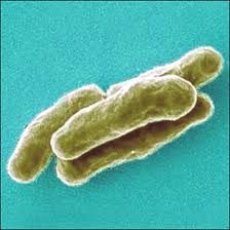New publications
A key mechanism of mycobacterial antibiotic resistance has been discovered
Last reviewed: 01.07.2025

All iLive content is medically reviewed or fact checked to ensure as much factual accuracy as possible.
We have strict sourcing guidelines and only link to reputable media sites, academic research institutions and, whenever possible, medically peer reviewed studies. Note that the numbers in parentheses ([1], [2], etc.) are clickable links to these studies.
If you feel that any of our content is inaccurate, out-of-date, or otherwise questionable, please select it and press Ctrl + Enter.

Scientists from the USA have managed to discover the key mechanism for the formation of resistance of the tuberculosis pathogen to antibiotics, Medical Xpress reports.
Tuberculosis is extremely difficult to treat – even in uncomplicated cases, treatment for the disease involves taking a series of antibiotics (usually four to six) for at least six months. Over time, more and more strains of the pathogen (Mycobacterium tuberculosis) become resistant to existing drugs.
The main reason for this is the special structure of the bacterial cell wall. One of its components is mycolic acids, which provide reliable protection of the microbe from external influences. Without these acids, the mycobacterium dies.
It is known that mycolic acids are synthesized inside the bacterial cell, after which they exit through the membrane into the cell wall. However, the transmembrane carrier molecule could not be found for a long time, despite the efforts of many scientists.
Researchers at Colorado State University have been testing a variety of substances for antibacterial activity against the tuberculosis pathogen for 30 years. Their search recently ended in success: one substance was extremely effective in inhibiting the growth of mycobacteria in a nutrient medium.
A detailed study of this compound and its mechanism of action showed that it blocks the sought-after transmembrane transporter of mycolic acids, which was thus also discovered. The discovery of this transport protein provides a new direction for the search for highly effective drugs, since its blockade leads to the death of the mycobacterium.
A detailed description of the mycolic acid transporter has not yet been given – the newly discovered molecule must first be studied in detail. The substance by which it was discovered has not been named.
 [ 1 ], [ 2 ], [ 3 ], [ 4 ], [ 5 ], [ 6 ], [ 7 ], [ 8 ], [ 9 ], [ 10 ], [ 11 ]
[ 1 ], [ 2 ], [ 3 ], [ 4 ], [ 5 ], [ 6 ], [ 7 ], [ 8 ], [ 9 ], [ 10 ], [ 11 ]
